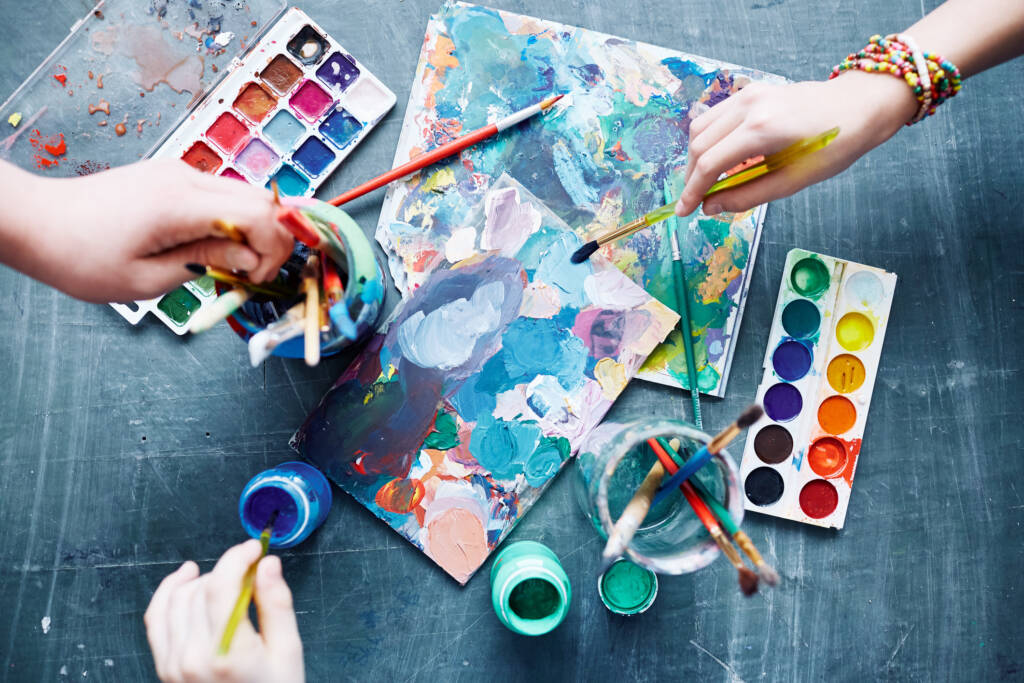
Elementary Art Grade 3

Elementary art at VLACS helps develop fine motor skills, critical thinking skills, creativity, and an appreciation for different cultures.During this art course, students will learn how to use art vocabulary, manage their time, and work together with others. They will improve their observation skills and be able to talk about and understand different works of art. The course also teaches about art history, including famous artists and movements. It connects with other subjects like Math, Social Studies, Science, Health, Language Arts, Music, Dance, and Physical Education.
Please view the Elementary Parents Guide for Grades 3-5 with guidance on helping your student transition to online learning and thrive at VLACS.
Major Topics and Concepts
Module One: Line
- 01.00 Module One Pretest
- 01.01 Line
- 01.02 Edgar Degas
- 01.03 Module One Review and Assessment
Module Two: Shape
- 02.00 Module Two Pretest
- 02.01 Shape
- 02.02 Joan Miró
- 02.03 Module Two Review and Assessment
- 02.04 Module Two Discussion-Based Assessment
Module Three: Color
- 03.00 Module Three Pretest
- 03.01 Color
- 03.02 Georgia O’Keeffe
- 03.03 Module Three Review and Assessment
Module Four: Space
- 04.00 Module Four Pretest
- 04.01 Space
- 04.02 Victor Vasarely
- 04.03 Module Four Review and Assessment
- 04.04 Module Four Discussion-Based Assessment
Module Five: Texture
- 05.00 Module Five Pretest
- 05.01 Texture
- 05.02 Robert Rauschenberg
- 05.03 Module Five Review and Assessment
Module Six: Form
- 06.00 Module Six Pretest
- 06.01 Form
- 06.02 Dale Chihuly
- 06.03 Module Six Review and Assessment
- 06.04 Module Six Discussion-Based Assessment
Module Seven: Art Around the World
- 07.00 Module Seven Pretest
- 07.01 Oceania
- 07.02 Asia
- 07.03 Europe
- 07.04 Africa
- 07.05 South America
- 07.06 North America
- 07.07 Module Seven Review and Assessment—Project
- 07.08 Module Seven Discussion-Based Assessment
Course Materials
To achieve success, students are expected to submit work in each course weekly. Students can learn at their own pace; however, “any pace” still means that students must make progress in the course every week. To measure learning, students complete self-checks, practice lessons, multiple choice questions, projects, discussion-based assessments, and discussions. Students and families are expected to maintain regular contact with teachers because, when teachers, students, and parents work together, students are successful.
Required Materials – Please view the List of Materials before registering.
Competencies
Line
Students will demonstrate an understanding of the element of line by identifying different line types, defining contour and gestural line, and using gestural lines to create movement in artwork.
Shape
Students will demonstrate an understanding of the element of shape by explaining how emphasis is used in artwork, defining still life, and using geometric shapes, organic shapes, and emphasis to create a still life.
Color
Students will demonstrate an understanding of the element of color by explaining how colors connect with emotions, creating colors that are seen in nature, and using color to create emphasis in their artwork.
Space
Students will demonstrate an understanding of the element of space by defining perspective and vanishing point, explaining the difference between realistic and abstract artwork, and using space in an abstract artwork.
Texture
Students will demonstrate an understanding of the element of texture by creating texture in a mural, sharing a message about an issue in a community through a mural, and describing how mixed-media is used to create texture in artwork.
Form
Students will demonstrate an understanding of the element of form by identifying three-dimensional forms in the environment, explaining how symbols and variety are used in three-dimensional artwork, describing how form is used in glassblowing, and using form and variety to create a three-dimensional sculpture.
Art Around the World
Students will demonstrate an understanding of art around the world by creating artwork inspired by different cultures, using the elements and principles of design in artwork, and critiquing a piece of artwork.

